The Pittsburgh Symphony Orchestra (PSO) is an American orchestra based in Pittsburgh, Pennsylvania. The orchestra's home is Heinz Hall, located in Pittsburgh's Cultural District.
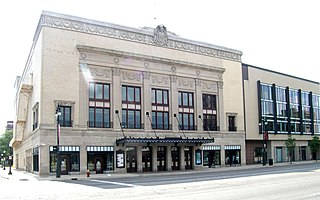
Orchestra Hall is an elaborate concert hall in the United States, located at 3711 Woodward Avenue in Midtown Detroit, Michigan. The hall is renowned for its superior acoustic properties and serves as the home of the internationally known Detroit Symphony Orchestra (DSO), the fourth oldest orchestra in the United States. With the creation of an adjoining auditorium for jazz and chamber music in 2003, Orchestra Hall became part of the Max M. and Marjorie S. Fisher Music Center. It was listed on the National Register of Historic Places in 1971.

The John F. Kennedy Center for the Performing Arts is the United States National Cultural Center, located on the eastern bank of the Potomac River in Washington, D.C. It was named in 1964 as a memorial to assassinated President John F. Kennedy. Opened on September 8, 1971, the center hosts many different genres of performance art, such as theater, dance, orchestras, jazz, pop, psychedelic, and folk music.

The Tennessee Theatre is a movie palace in downtown Knoxville, Tennessee. The theater was built in 1928 in the 1908 Burwell Building, considered Knoxville's first skyscraper. The theater and Burwell Building were added to the National Register of Historic Places in 1982, and the theater was extensively restored in the early 2000s. The Tennessee Theatre currently focuses on hosting performing arts events and classic films, and is home to the Knoxville Opera and the Knoxville Symphony Orchestra. The theater is managed by AC Entertainment.

C. W. & George L. Rapp, commonly known as Rapp & Rapp, was an American architectural firm famed for the design of movie palaces and other theatres. Active from 1906 to 1965 and based in Chicago, the office designed over 400 theatres, including the Chicago Theatre (1921), Bismarck Hotel and Theatre (1926) and Oriental Theater (1926) in Chicago, the Five Flags Center (1910) in Dubuque, Iowa and the Paramount Theatres in New York City (1926) and Aurora, Illinois (1931).
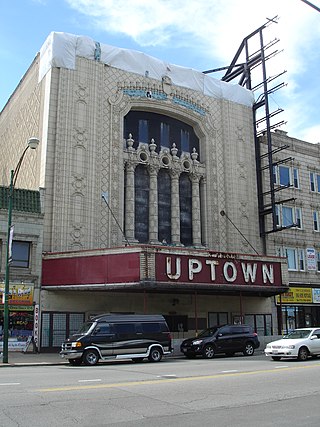
A movie palace is any of the large, elaborately decorated movie theaters built between the 1910s and the 1940s. The late 1920s saw the peak of the movie palace, with hundreds opening every year between 1925 and 1930. With the advent of television, movie attendance dropped, while the rising popularity of large multiplex chains in the 1980s and 1990s signaled the obsolescence of single-screen theaters. Many movie palaces were razed or converted into multiple-screen venues or performing arts centers, though some have undergone restoration and reopened to the public as historic buildings.
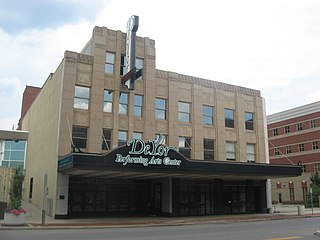
Powers Auditorium, in Youngstown, Ohio is one of the largest auditoriums in the Youngstown-Warren area. The facility is the main venue of downtown Youngstown's DeYor Performing Arts Center. The complex also includes the Adler Art Academy, Beecher Flad Pavilion, and Ford Family Recital Hall. Originally built in 1931 as the Warner Theatre, the former movie palace was renovated and reopened as Powers Auditorium in 1969.
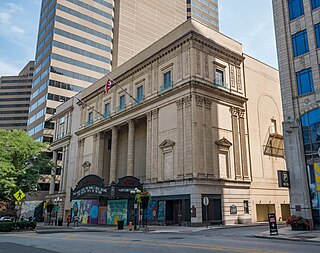
The Ohio Theatre is a performing arts center and former movie palace on Capitol Square in Downtown Columbus, Ohio. Known as the "Official Theatre of the State of Ohio", the 1928 building was saved from demolition in 1969 and was later completely restored. The theater was declared a National Historic Landmark in 1977 as one of the nation's finest surviving grand theaters.

The Benedum Center for the Performing Arts is a theater and concert hall located at 237 7th Street in the Cultural District of Pittsburgh, Pennsylvania. Designed by the Philadelphia architectural firm Hoffman-Henon, it was built in 1928 as the Stanley Theatre. The former movie palace was renovated and reopened as the Benedum Center for the Performing Arts in 1987.
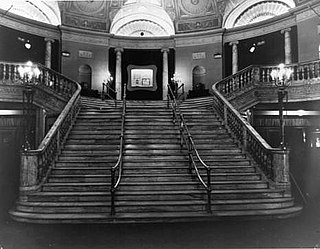
The Capitol Cinema was the largest movie theatre ever built in Ottawa, Ontario, Canada, and was the city's only true movie palace. Opened in 1920, the 2530-seat cinema was regarded as one of the best cinemas designed by famed theatre-architect Thomas W. Lamb.

The Krannert Center for the Performing Arts is an educational and performing arts complex located at 500 South Goodwin Avenue in Urbana, Illinois and on the campus of the University of Illinois Urbana-Champaign. Herman C. Krannert, an industrialist who founded Inland Container Corporation and an alumnus of the university, and his wife, Ellnora Krannert, made a gift of $16 million that led to the Krannert Center's construction. Max Abramovitz, the architect who designed the facility, was also an Illinois alumnus.

Boettcher Concert Hall, is a Concert Hall in Denver, Colorado and is home to the Colorado Symphony. It is named after Colorado native and philanthropist Claude K. Boettcher.

The Pittsburgh Cultural Trust (PCT) is a nonprofit arts organization formed in 1984 to promote economic and cultural development in Downtown Pittsburgh. The "Trust" has focused its work on a 14-square block section called the Cultural District, which comprises numerous entertainment and cultural venues, restaurants, and residential buildings. All together, the organization claims to oversee more than one million square feet of real estate, including commercial and residential buildings, making it one of the largest landowners downtown. In recent years the organization has had a contentious relationship with the city of Pittsburgh concerning the tax status for many of its properties, resulting in a case being heard by the state Supreme Court in 2011.
The Cultural District is a fourteen-square block area in Downtown Pittsburgh, USA bordered by the Allegheny River on the north, Tenth Street on the east, Stanwix Street on the west, and Liberty Avenue on the south.
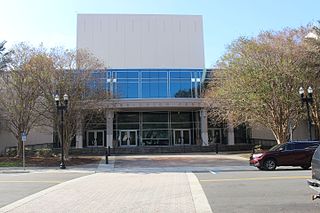
The Jacksonville Center for the Performing Arts (JCPA) is a performing arts center located in Jacksonville, Florida. Situated along the Riverbank, the venue is known as the First Coast’s "premiere riverfront entertainment facility". Originally opening in 1962, the facility was renovated beginning in 1995 until 1997; with a grand re-opening on February 8, 1997. The center consists of three venues: a theatre; concert hall and recital hall. It is home to the Jacksonville Symphony, Jacksonville Symphony Youth Orchestra, and the FSCJ Artist Series.

The Missouri Theatre, is a concert and entertainment venue in downtown Columbia, Missouri, occupying most of a city block between 9th street between Locust and Elm Streets. It was designed after the Opéra Garnier by the Boller Brothers, built in 1928, and is on the National Register of Historic Places. It is Columbia's only surviving pre-Depression movie palace and vaudeville stage. In 2011, the University of Missouri began a three-year lease of the facility. The Missouri Theatre is the resident home of the Missouri Symphony Orchestra, and is also frequently used by University of Missouri and civic groups. As of July 1, 2014, The University of Missouri took over ownership of the Missouri Theatre. It is one of the main performance venues for the University of Missouri School of Music.

The Saenger Theatre is a historic theater and contributing building to the Lower Dauphin Street Historic District in Mobile, Alabama. It was dedicated in January 1927. The Saenger Theatre is a Mobile landmark, known for its architecture and ties to local cultural history. The theater has been completely renovated in recent years with an upgraded electrical system, VIP facilities, new stage rigging and sound system. It is the official home of the Mobile Symphony Orchestra and also serves as the venue for movie festivals, concerts, lectures and special events.

The Orpheum Theatre, also known as New Orpheum Theatre and Orpheum Electric Building, is a performing arts center located at 528 S. Pierce Street in Sioux City, Iowa. Built in 1927 as a vaudeville and movie palace, the theatre was restored in 1999 and today is the home of the Sioux City Symphony Orchestra.
The Pittsburgh Youth Symphony Orchestra is one of the oldest youth orchestra programs in the United States, having performed its first concert under the direction of Stanley H. Levin in 1945 at Carnegie Music Hall in the Oakland neighborhood of Pittsburgh, PA. The idea of an independent youth orchestra in Pittsburgh originated with the student musicians that participated in the Music Festival of the In-and-About Pittsburgh Music Educators Club. It is most often represented by its initials, PYSO, affectionately pronounced “Pie-So” by members, alumni and supporters.

The Providence Performing Arts Center (PPAC), formerly Loew's State Theatre and Palace Concert Theater, is a multi-use not-for-profit theater located at 220 Weybosset Street in downtown Providence, Rhode Island. It was built in 1928 as a movie palace by the Loews Theatres chain to designs by Rapp & Rapp, the leading designers of music palaces at the time. PPAC contains 3,100 seats and hosts touring Broadway shows, concerts, plays and films.



















